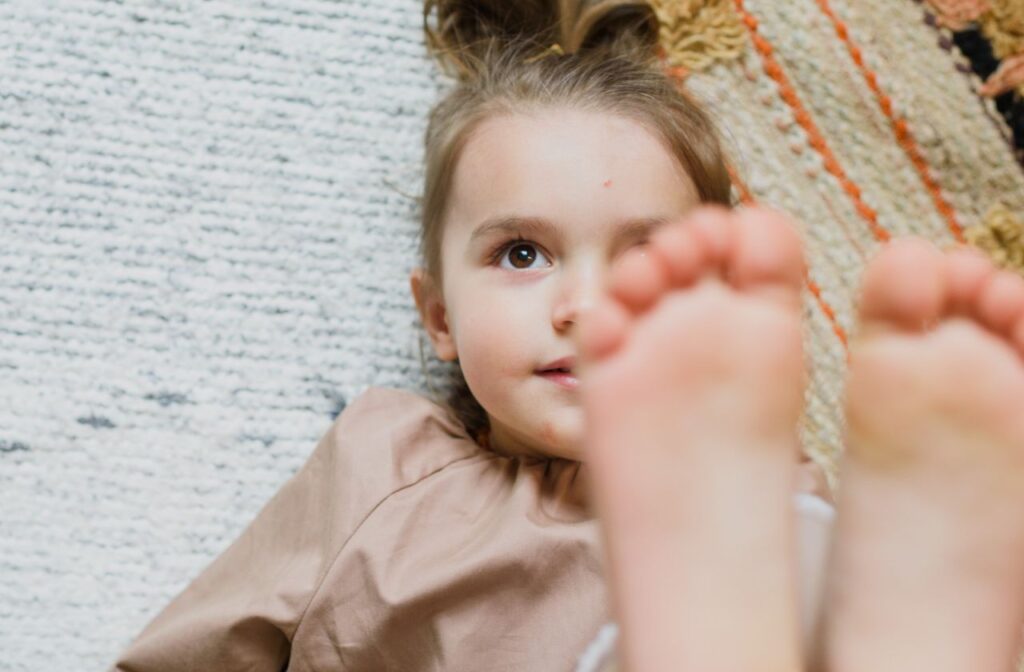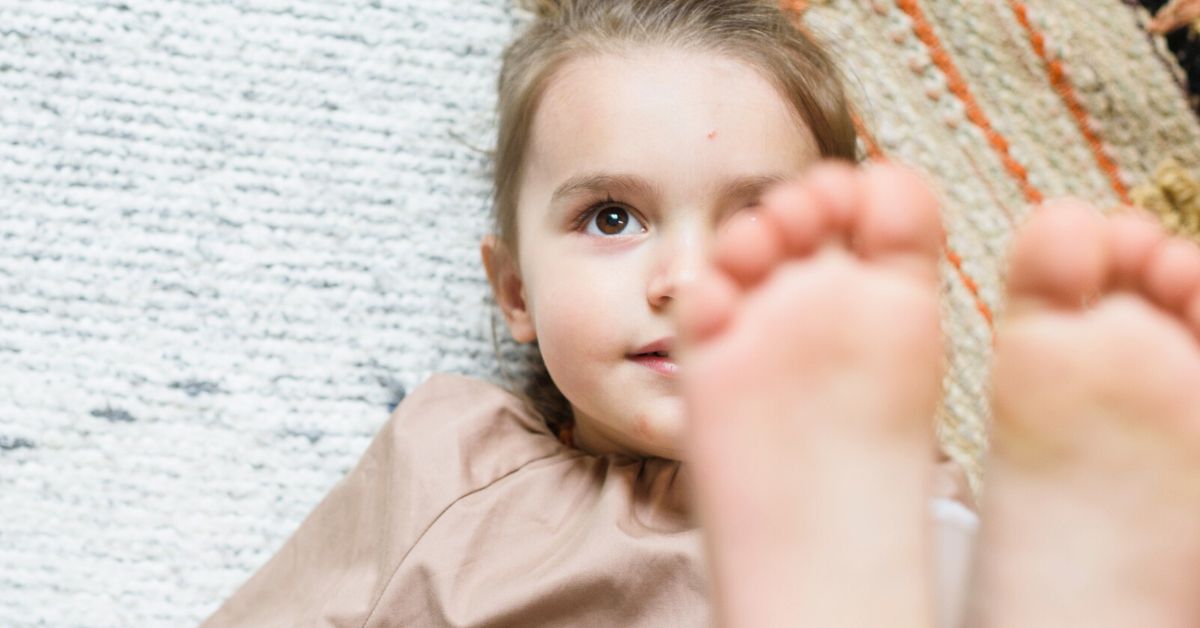All podiatrists have heard worried parents who come for a consultation with phrases like ‘I think my son has flat feet’ or ‘my son walks with bowed legs’. Many of these conditions affecting children’s feet are more common than you might think. Here you’ll find information on some of the most common foot health concerns in children.
Children’s feet tend to be a lot more flexible as their bones, muscles and tendons are still developing. Ligaments in particular have a lot more flexibility. Early detection of abnormal development is important as it helps avoid any problems in the future.

The most common foot health concerns in children
1. Flat Feet
During the first 2-3 years of life, all children’s feet are relatively flat, due to the great elasticity and flexibility of the ligaments and tendons in the feet. Flat feet in a baby or toddler is generally not a concern unless presented with other factors. These might include pain, very delayed walking milestones and refusal to wear footwear.
Variables such as age, pain, gait, footwear and mechanics of the knee and hip are taken into consideration during the assessment of flat feet in children. Our role as podiatrists is to detect problematic flat feet and intervene as appropriate. We might suggest stretches to lengthen tight muscles on a child who has recently has a growth spurt. Or we might advise a biomechanical intervention with an orthotic. This provides an unstable, flexible foot with the needed support and alignment for healthy pain-free development.

2. Sever’s Disease
We often call Sever’s Disease “growing pains” and it is the most common cause of heel pain in children. Luckily, it is temporary as well as treatable. Found at the back of the heels in children aged 8-14, it is often seen just before a puberty growth spurt. Pain usually comes on during or after physical activity. Sever’s disease is thought to occur because the growth area where the Achilles tendon attaches to the bone is ‘active’, beginning to change from cartilage to bone.
Our podiatrists treat Sever’s by addressing the underlying causes, as well as relieving some of the pressure on the growth plate and initiating a strengthening program.
3. Tiptoe Walking
Walking on the toes or the balls of the feet, also known as tiptoe walking, is fairly common in children who are just beginning to walk. Most children outgrow it by the age of 3. This is known as idiopathic toe walking (without a physical or neurological cause). Usually a child will be able to touch their heels on the ground with no issues.
Sometimes your podiatrist will need to do further investigation into an underlying cause for why the child is tiptoe walking. A full neurological assessment will be done to determine this. Some common causes include:
- Autism spectrum disorder – learn more about ASD
- Muscle spasticity e.g. in cerebral palsy
- Sever’s disease – pain when putting the heel on the ground
- Congenital muscular dystrophy – certain conditions are also associated with tiptoe walking
- Hypersensitivity – children more sensitive to touch and even footwear can lead to toe walking

4. Ingrowing Nails
Ingrown nails are very common in children. They may experience tenderness, swelling, redness or even pus in the corner of the toenail. They can be caused by a variety of different things such as tight shoes, sports & activity, improper cutting of the nail and they can be hereditary.
If any of the above are the case, the nail may need to be seen by a podiatrist. Your podiatrist will treat it in one of two ways. Conservatively, where the podiatrist will remove the offending edge in the corner to provide some relief, or with a procedure called a partial nail avulsion. This is seen as a permanent solution for ingrown nails
5. Plantar Warts
Plantar warts most commonly form on the soles of the feet and are caused by a virus. Often mistaken for corns, they usually have little black dots and some people say they resemble a cauliflower. They can be sore to stand on and are one of the most common foot health concerns in children – they affect one in five kids!
There are a variety of treatment options for these stubborn warts. We may use SWIFT technology. This is a thermal energy device that stimulates healthy tissue and triggers the body’s immune response to fight the virus. We also may use salicylic acid which irritates the wart tissue and encourages healthy tissue to grow. Or needling, which also works by triggering your body’s immune response.
Worried about one of these foot health concerns in children?
Rather than continue to worry, take the next step and book an appointment with your podiatrist to set your mind at ease. We can help you keep your child’s foot health in tip top condition.


